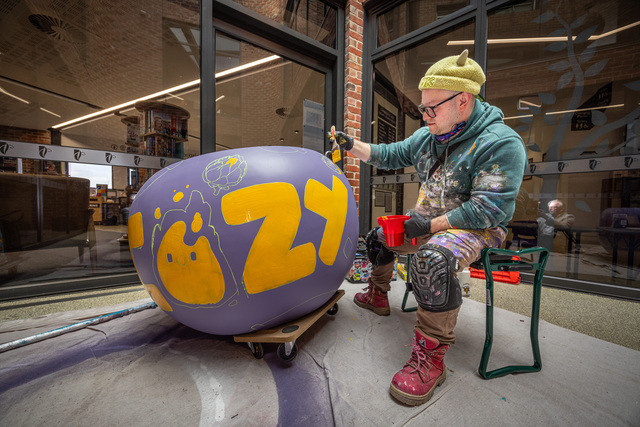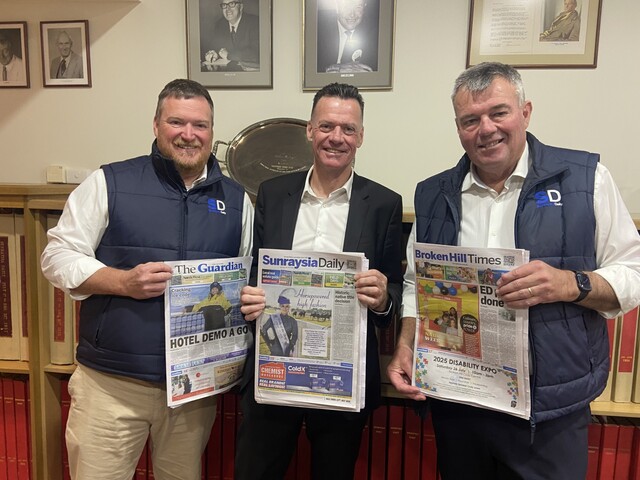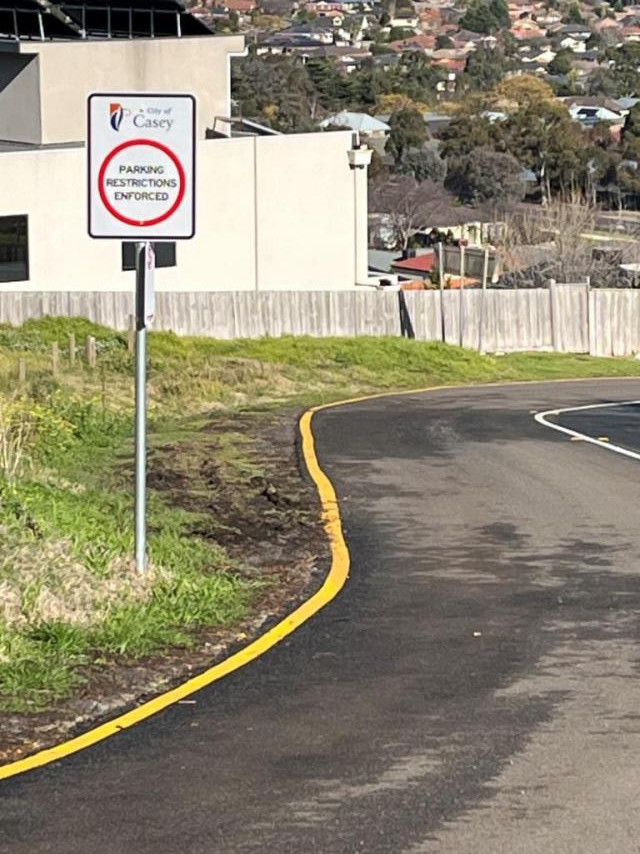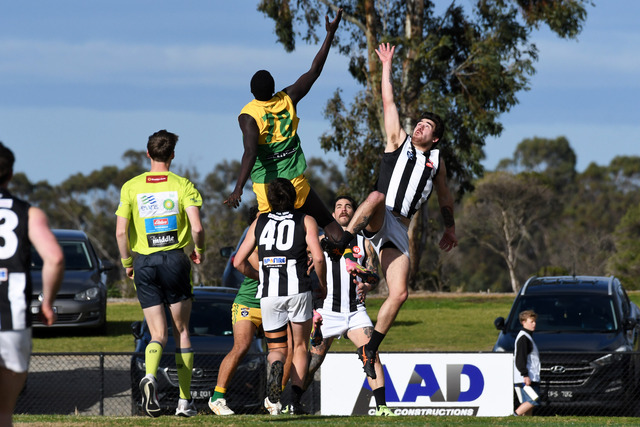Fausto sat on the spinning chair, a grin on his face as he spoke about his inspirations.
He talked about a little library tucked in the back of his mind, a place where he pulled ideas from, ideas that would influence his next stroke, or his entire work.
Being an artist, a self-taught one at that, has never been easy, but it was damn fun.
Above all, however, telling a story was most important for Fausto; not just for himself, but for artists and people as a whole.
“Having that story is really, really important; I think to me, most art, if it doesn’t have a message, it’s kind of just, well, something that anyone can make,” he said.
“If I want a soulless piece, I can just look at something and copy it.
“Still life, for example, it’s the colours and what people physically see, but to me, [artists] aren’t painting that art, they’re painting the story of themselves onto it.”
Bridging influences from media, especially pop culture, movies, TV shows, anime and others, Fausto boasts an arsenal of works, many if not all, a direct representation of himself.
“I think that’s why I’m not really attached to my pieces, because it’s got that soul to it, you know?” he said.
“I don’t sign it, or usually put my name on it, because my pieces are supposed to be out there.
“The permanence of art doesn’t really matter; it’s the story behind it that does.”
Three large vases. Those were the pieces Fausto was given to paint under the theme of ‘cosy’, for the City of Casey’s winter art festival.
His live painting sessions, which patrons and guests of the hub could watch him work during, were held from 16 to 17 July, and are to be displayed at the Cranbourne West Community Hub.
Standing at a metre tall, Fuasto began by sanding the three pots down before priming and prepping them for another round of painting.
While reflecting on it, he scrolled through his tablet, going through his own creative process, one that involved delving into his little mental library, and putting it all to paper.
Storyboards, drafts, and countless experiments with colours, lighting and angles were flicked through; then he touched on the overall theme of the hub, and how he matched the final product with the motto of connection, learning and play.
“Most of my work is story-based artwork, and I think they should always say something,” he said.
“Even if the story is just for me, it helps me develop the piece and to stay on track, and to make sure that they all feel and look the same.”
The feature piece is Fausto’s magical and mystical take on the long-nosed potoroo, a native Australian marsupial that can be found in the Cranbourne Botanical Gardens.
Speaking with the Moonlight Sanctuary in Pearcedale, he said that the group had been working with Melbourne Zoo and the State Government in repopulating the gardens with the potoroos.
“Since we’re doing that, we’re going for the theme of cosy, and I just thought about a story of the potoroo trying to find that cosy place,” Fausto said.
“So I started to wonder, what would be cosy for a potoroo mouse? You know, from their perspective, and I was like, oh, somewhere underground.”
The biggest inspiration came from The Secret World of Arrietty, which in turn was also an adaptation of the children’s book called The Borrowers.
Building on his personal experience from those pieces of media, Fausto said that he was able to visualise the character and the other elements around it.
He laughed suddenly, saying that once the idea came to mind, his love for high fantasy couldn’t be waned, leading to the creation of the magical mouse.
“It became a magical potoroo mouse that’s going through all these magical spaces underneath the community hub,” he said.
Pointing at the sketch he did, he said, “the mouse has a staff, and there are all these books flying around it because the hub’s attached to the library”.
“I also tried to make it more relatable to my culture, so I gave him a traditional Colombian poncho and a mountaineer’s hat.
“So it’s a story for myself, but also a consideration of the story that the potoroos are probably going through, breaking through the elements to find their cosy space,” he said.
The art is one thing, but Fausto also wanted to incorporate a sense of inclusion when it came to taking in his piece, especially for the younger audiences.
Before the open viewing period, Fausto created small characters that children could paint, doing so alongside him.
He said that it was a way for the younger ones to feel connected, not just to the piece, but also to the art of creation.
“It’s for the kids to colour while I’m also colouring things, you know?” he said.
“At the end of the day, I take pictures of what they’ve created, and when they’re finished, they can put their pieces up on a tree for display.
“So it’s not just me doing my thing, I aimed for that community focus, to do something that the people, the kids, can be like, ‘oh I remember when’ and so on.”
He placed a strong emphasis on the story part, about how every piece always tells someone something.
“Stories are important because we’re stars, and if someone were to break humans down, we’re just specks of dust floating on a rock,” he said.
“If we go back to basics, there’s really nothing to it, basically insignificant to the universe.
“But our stories, individually, mean the world; someone’s story of their life means the most to them because they’re living through it.
“That’s why I think stories matter, why they’re important in art, so it’ll be a disservice for me if I don’t put anything in it.”
While it was easy for Fausto to speak on the process, the most difficult question was when it came time to speak on his inspirations.
It was something that racked his brain, something that made him slouch on the seat and stare into the ceiling.
For the first time since the conversion began, he grew quiet.
Astro Boy; Princess Mononoke; Night Of The Living Dead (also Train to Busan); Bruce Lee’s Way of the Dragon; Scrubs and Xena: Warrior Princess.
Those were what came to mind, though there were times when he was unsure if he had made the right choice, rifling through the swathe of other titles that spilled over from his mental library.
“Oh man, that’s massive, I could give you [more] of my inspirations when it comes to every single genre,” he said.
“Astro Boy has that whole thing of – is he a boy, is he even human? The disparity between those, then Princess Mononoke has that high fantasy aspect, and it just grabbed you, you know?”
He spoke about comedy in horror, and how it resonated with him, especially as someone who grew up in a third-world country where joking about one’s plight was a common coping mechanism.
He added that it influenced him to make characters in darker settings, but at the same time are equipped with the mental fortitude to adapt, and “to think of ways to make things better”.
Action movies served a similar purpose, where the characters are driven by this insatiable need to accomplish the goal set in front of them, and where nothing, no matter the obstacle or hurdle, will stand in their way.
Fausto said the same about romantic comedies, where Xena: Warrior Princess left such a strong impression on him because of the female lead in an action setting; and of course, as a child, her battles with monsters.
“South America as a whole is rather misogynistic, a part of it has to do with religion, but it all really goes back to my mum,” he said.
“She’s a strong woman, she’s a tank, in one of those ways that there is no way anyone is f***ing with her.
“There were seven of us [children], and she raised us mostly by herself since my dad wasn’t really in the picture, and let me say, we weren’t the easiest kids.”
Fausto spoke at length about his personal history, his family, and gave a more in-depth breakdown of how these different pieces of media influenced not just his day-to-day life, but the stories he had to tell through his art.
“Look, all these things impacted me as a person, and it all just kinda flows into my artwork,” he said.
The three pieces are to be displayed at the Cranbourne West Community Hub, one in the foyer and the remaining two in a designated open space.
Moving forward, Fausto is looking to create more pieces, his own interpretations of the world, telling stories of yore and now through the lead of pencils and the tips of brushes.







